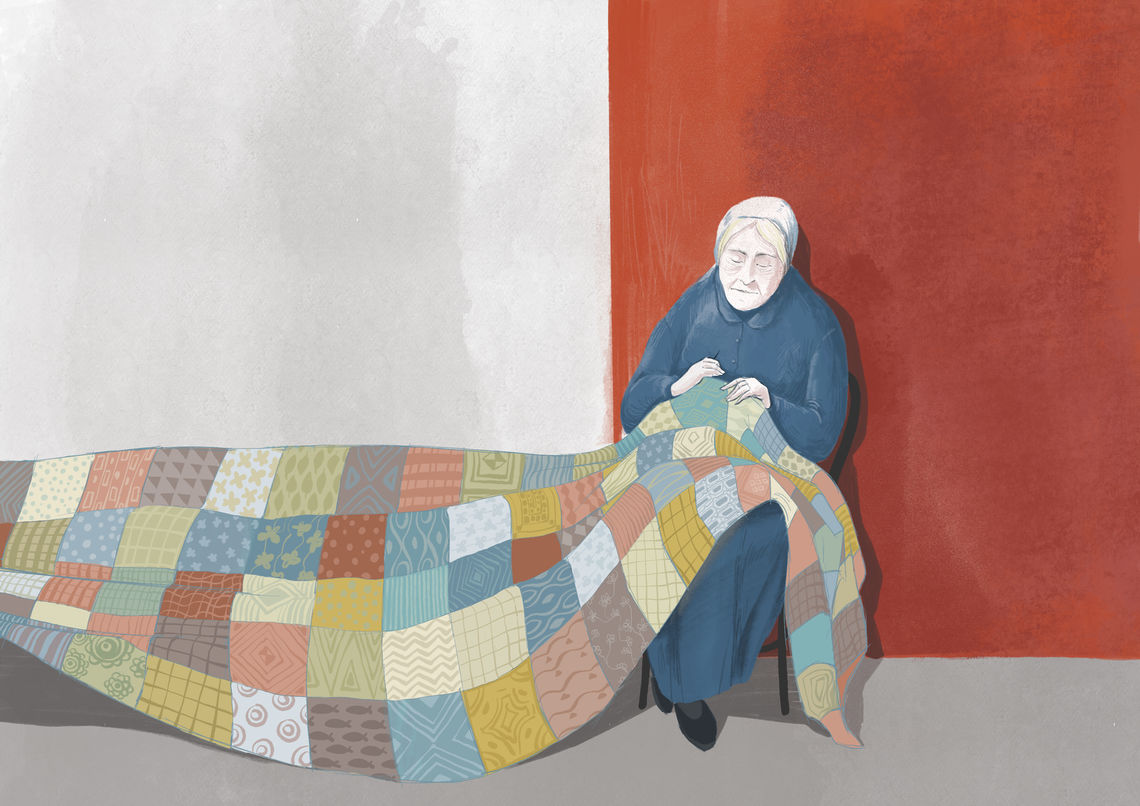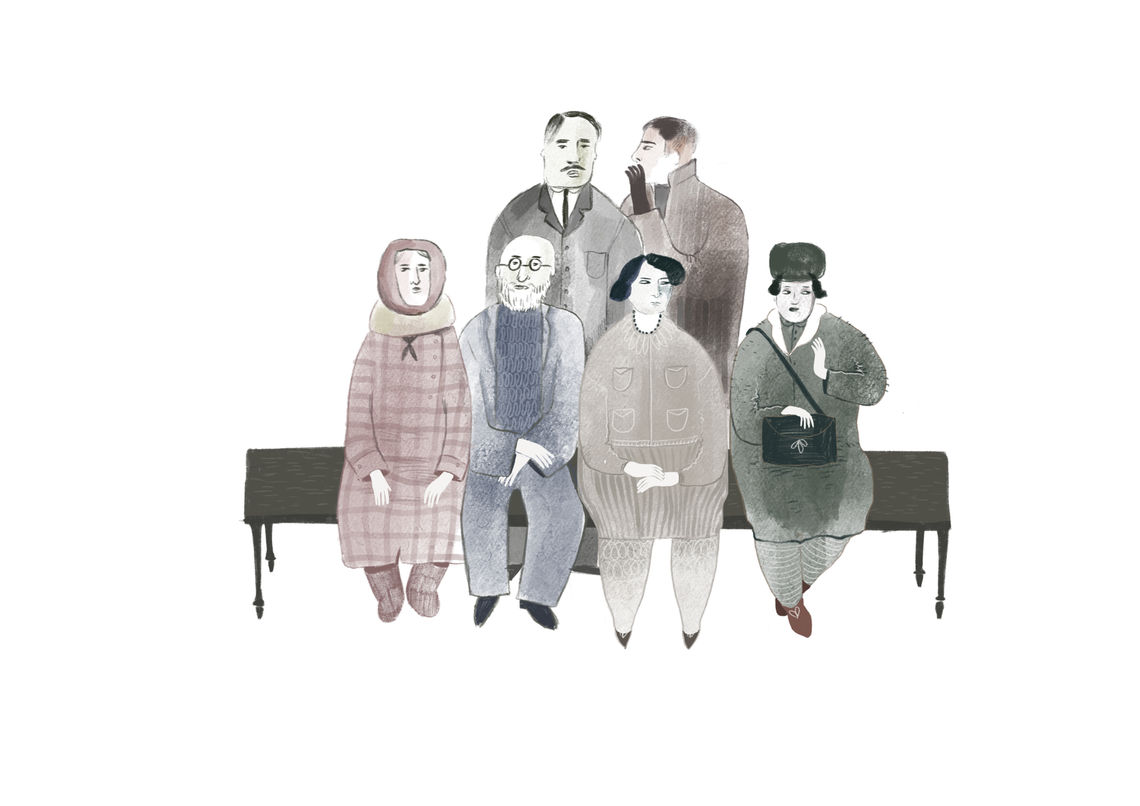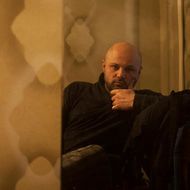
The outside disappeared into a blur, making everything inside razor sharp. All things impractical, ugly or uncomfortable became grating as the virus changed the focus. Isolation at home required a lovable space – something that felt like a nest. The sense of discomfort came from the rediscovered understanding of the importance or unimportance of the objects around us. So the wardrobe was the first point of attack. Clothes piled up on the floor, waiting to be judged on the scale of lovability and necessity. As the "useless" pile grew in scale, so did the shame at having accumulated it in excess and vanity. More waste. Waste had become a sign of our collective weakness: the quintessence of our indifference, mindless consumption, the inability to make the discarded useful again and to mend what is broken.
The unwanted clothes on the floor arranged themselves into a mosaic that would look perfect as a bed cover. The bed needed one, but it was going to be bought and not made. Nobody in the house knew how to sew or stitch anything more than a button. A long time ago, there would be someone like great-grandmother Angin to assemble these torn jeans and T-shirts into a stylish quilt. She stitched together dozens of such quilted covers from the old clothes worn by two or three generations of children. Adorning chairs and ottomans, these patchwork blankets were an inseparable aspect of everyday life in the paternal village. Like archaeological fragments woven into a new tale, Angin's handiwork evoked tactile memories – akin to smells that transported one into the past.
In the 1980s, she was already small, slow and fragile – quivering in the background like an autumn leaf ready to fall. To her great-grandchildren, she was part of the ancient furniture. It was impossible to imagine the yard, the making of lavash, the massacre of the flies, or the patching up of torn socks without this stoic woman. For the kids living out the last days of the Soviet empire in the village idyll right under the loins of Mount Ararat, Angin inspired not so much veneration, but an instinctive trust in the indelible permanence of things. Every household in the village had their own totemic grandmother to safeguard the mythical aura of the patriarchal domain.
Each morning, she walked out of her room at 8 a.m., white hair perfectly tucked under a headscarf, wearing a blue apron over one of her flower-patterned robes that she probably bought back in the 1960s. The many pockets of this daily uniform were stuffed with all kinds of paraphernalia that Angin used in her daily chores: needles, pins, small bits of paper, buttons and rags. Animals would be fed, something would be washed or fixed, a newborn baby would be minded, the garden tended to, the dough prepared, and finally, the spartan cycle of the great-grandmother's daily existence would come to closure in the late hours, only to recommence the next day. Limited to the fences of her house, Angin's micro-universe was a world of life's placid rhythms, rarely disturbed by the dramas of the outside world. But it was a complex mechanism, through which the flow of time was disciplined for maximum productivity and efficiency. A resilient ecosystem in which nothing got wasted and even leisure time was put to use in exchanging information and consolidating communal ties.
Angin's composure and steely routine didn't dent even when the Soviet state started to implode in the late 1980s. It was just one of the many upheavals that Angin experienced at the dawn of her long life: the 1988 earthquake, the devastating war in Karabakh, the cold and deprivation of Armenia's first independent years. She sighed more and her eyes sunk deeper into her leathered face. Even when the household's patriarch – the village mayor and Angin's eldest son – fell ill from stress and became an angry shadow of his former self, the grandmother's brittle body seemed incapable of producing tears. She kept feeding her chickens and stitching her quilts as if it was a matter of life or death. Nobody really questioned where this resilience came from. Nobody asked what she (or the other women in the household) thought about the events that were unhinging a reality once thought to be unbreakable. Glum as she became during this time, Angin persevered with the resigned stamina of somebody who had seen much worse.
The children followed the heated debates of the adults with a mixture of anxiety and curiosity. All-Russian schools would be closed, Granddad Lenin was no longer their best friend and instead of May 1, April 24 would now be the most important day of the year after New Year's Eve. Overnight, Turks and Azerbaijanis came to represent an existential threat that they were told to fear and resist at all cost – the evil forces that held the holy mountain captive on the other side of the border. Most exciting of all was the discovery that there was once another, much bigger, Armenia that used to stretch "from sea to sea." The kids loved the sea, so they naturally wanted one "back" as soon as possible. Angin's name frequently came up in these heated discussions, as if she somehow knew the way back to these magical places behind the Mountain, where oranges and tangerines grew in the orchards instead of apricots. Suddenly, the frail matron – whose biggest secret seemed to be the hiding place of her monthly pension – became shrouded in a veil of mystery.
But unlike the other grandparents, Angin did not tell stories about her life. After losing her husband in World War II, she had raised her four children single-handedly. She milked cows until she retired to spend most of her time sewing things from scraps of clothing. This was the extent of her known biography, and the household hadn't made an effort to delve further. Yet, casually mentioned phrases, names and fragmentary details about her life in the "other Armenia" hinted at a more intriguing narrative that the kids were eager to hear more about. Though she angrily rebuffed attempts to extract information, Angin was too fragile to resist the children’s increasingly ferocious curiosity for very long and finally relented one day.
Her face grimacing into a mask of frustration and dread, Angin shielded a barrage of tactless questions about her origins, family, properties and where they had buried their gold while escaping the Turks. Replicating an interrogation scene from some Italian detective series, one of the boys wrote down her answers in a notebook. Angin tried to quickly pass from one episode to the next in her faint, rusty voice, as if filling in a questionnaire. As the inquiry continued, her speech became stranger, with words that recalled Armenian but sounded like a different language. This was not the kind of storytelling the kids were accustomed to or anticipated. Though they had heard about the million and half victims, the horrors of families burnt alive inside churches, all of that had the distant quality of a silent film seen on TV. Angin's terse recollections, on the other hand, pricked like knife jabs. It was not so much what she said, but the manner in which she expressed it. Staring into nowhere, she related her childhood experiences as if they were unfolding right before her eyes.
– she spoke of a prosperous family living in a large village next to Mush not far from Lake Van in a stone house with two floors where five siblings grew up playing in an olive grove after coming back from school that taught arithmetic and needlework to prepare girls as clever housekeepers much like the mother who wove carpets and organized large feasts when the family went to Msho Arakelots monastery during festivals where the villagers sang and danced together until one day in 1915 they packed whatever they could in a cart and fled under the cover of the night from the Turkish army that chased them over the rocky mountains where Angin's mother had to leave her newborn under a rock so they wouldn't get caught and somehow reached Baghdad to find shelter in date palm orchards in which two of the boys died from fever before the father took them on the road again with other survivors shuffling from Iraq to Iran until their caravan arrived in Soviet Armenia in 1922 to rebuild their shattered lives on the other side of the Holy Mountain on a vast plain where they again had to settle amidst Turkish-speaking people in a miserable little village in which the streets were covered with cow dung they dried to heat the mud-brick house from which Angin was given away in marriage at age seventeen to another refugee from Van who disappeared without a trace while fighting Nazis and left his wife with six children two of whom died from disease while her eldest had to walk ten kilometers to school and helped his mother on the collective farm until he grew up to govern the dusty village that became the pride of the valley where foreign guests would frequently visit to admire the lush vineyards and take a picture of the famous Khor Virap monastery in which no one was allowed to pray anymore –
Angin recounted her life's tragic moments matter-of-factly, like a narrative that she overcame a long time ago to reach blissful mundanity. She didn't complain, except to curse bloody Gorbachev for ruining it all. The children could barely comprehend the kind of brutality that Angin had experienced at their age. They weren't prepared for such revelations. Used to concealing their traumas behind a curtain of heroic images and mythical tales, people in the village suppressed their pain like a symptom of weakness. Thus, the stunned children left Angin alone to hide back the past that she had no desire to exhume. Only her face betrayed the dismay of having history dislodge the few quaint certitudes that she'd gained through so many sacrifices, while everyone else focused on the rewards promised by Armenia's turn to democratic freedoms.
But soon, the lights switched off. The fields became idle. Jobless men wandered around in catatonic confusion. The trees were felled to heat the freezing homes. Women sold their jewels to buy food. And the family nest began to disband too. Angin's grandsons followed in the footsteps of their ancestors, leaving their homes to seek better fortunes in faraway lands. It was all the things she longed never to witness again. Even when barely able to walk, Angin clung to her rigid daily routine as her last resort to sanity, until one morning, she let go and did not leave her room.
After the funeral, the meager remnants of great-grandma's life were sorted and packed away. Everything fit into just one small wooden trunk – her marriage chest. It was placed in the attic next to the heavy Soviet furniture, the massive 1950s TV set with the tiny screen that was the first in the village, communist literature and unfashionable clothes that nobody knew what to do with. The children grew up in different cities and continents. One of them eventually became the new guardian of the house that was progressively stripped of its old skin to be repackaged in plastic wallpaper, laminated floors and the perpetual buzz of wifi-connected devices operated by a new brood of impatient teenagers.
On their rare returns to their familial home, the old kids found little to remind them of the times they shared with each other. No quilts, no telephone numbers scratched on the walls, no musty black and white photos of forgotten kin. There were attempts to locate Angin's marriage chest with her prim 1950s dresses that were now being refashioned by hipster designers as “Soviet chic.” And wouldn't her colorful blankets made from scraps of discarded clothing look just amazing as a decorative wall-piece in the grandchildren’s minimalist white-washed apartments? A family relic that was their map to the past and the times when objects were synonymous with fates and biographies. Alas, the grandmothers had lost their claim even to the attic, which was emptied out during a monumental spring cleaning spree. Their modest trace was now just a hazy memory that floated away like a disappearing scent.
Totemic grandmothers would now be dutifully commemorated in toasts, their small eccentricities becoming occasional fodder for kitchen conversations. The symbolic role they played as upholders of virtue would probably survive to be passed on to another generation of women. Yet no one really reflected or tried to acknowledge the more tangible and vital aspect of their lives – as agents of the community, astute negotiators, architects and clever strategists who organized the chaos of reality into a sensible and livable realm that we so offhandedly call “home.”
Sitting on faux-leather couches, people chattered about how the virus had broken everything and ardently cursed Pashinyan or Putin. It seemed like a good time to remember bloody Gorbachev or those dark days of the early 90s, but no one did. Instead, the iPhones flushed with frenzied notices about the rising number of the sick and the dying. Revealing the ages of the elderly who had passed away that day – 61, 75, 82, 85. The messages bluntly “reassured” that the deceased had accompanying chronic illnesses. One wondered what kind of memories, skills or knowledge disappeared with them into the anonymous oblivion of these statistics – precious things that we thought of as useless. Perhaps, like Angin, they were the last kind of people whose hands could remember even when their tongues refused to. People who knew how not to waste time and fix the shards of the past into something whole, useful and beautiful again – a refuge quilted out of broken hopes and humble needs.

Original illustrations by Harut Tumaghyan.
In cooperation with the Heinrich Boell Foundation Yerevan Office South Caucasus Region.



